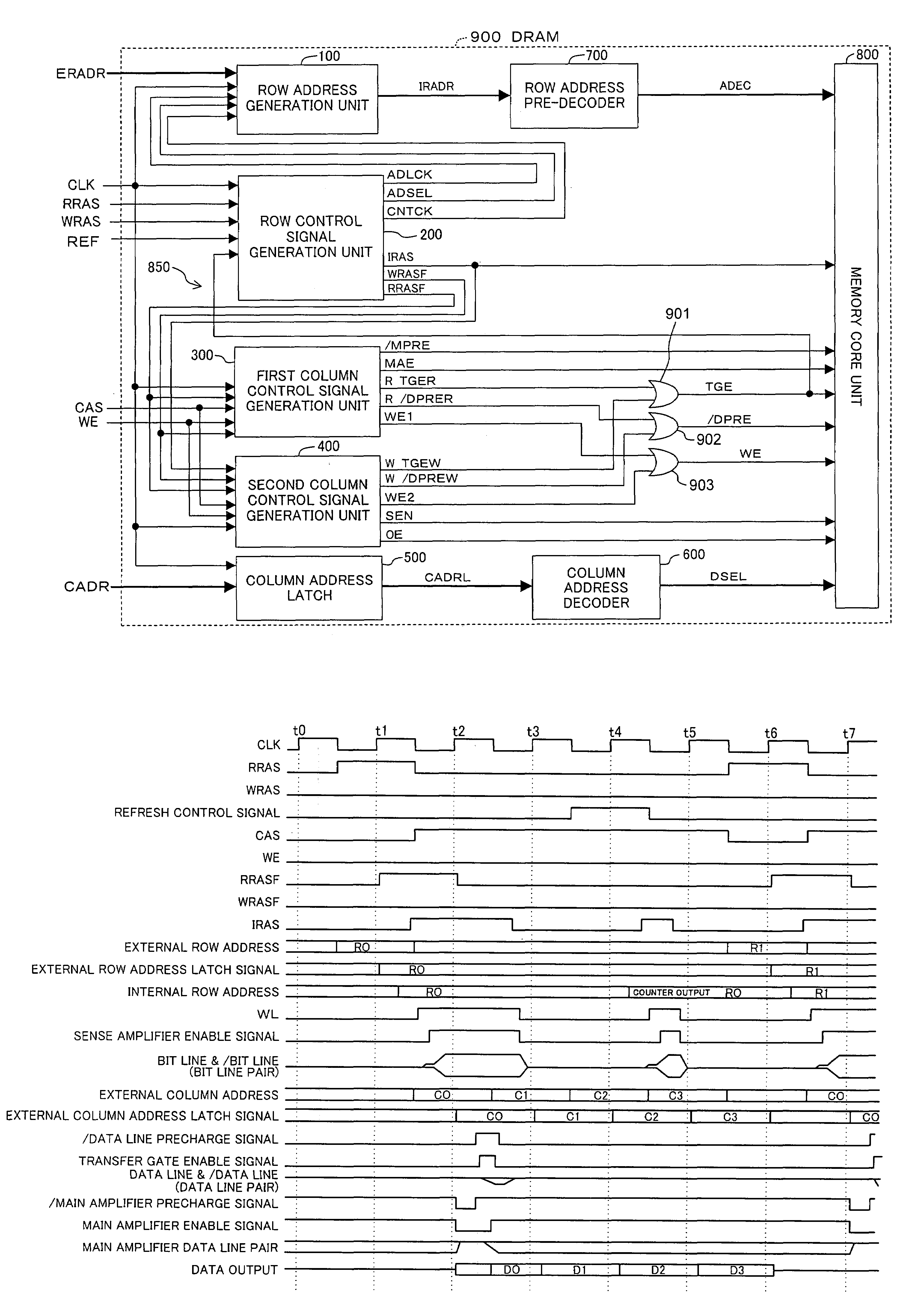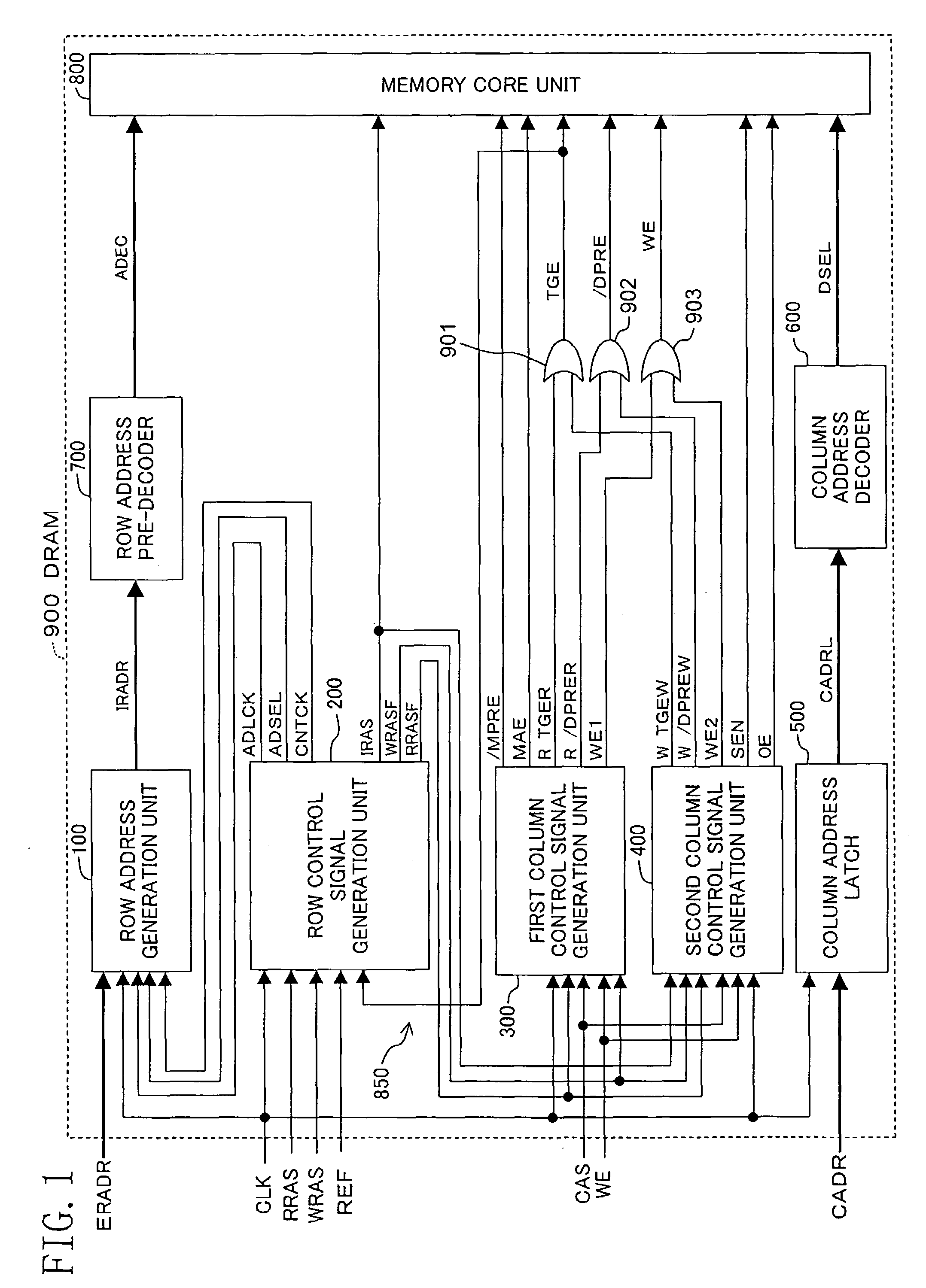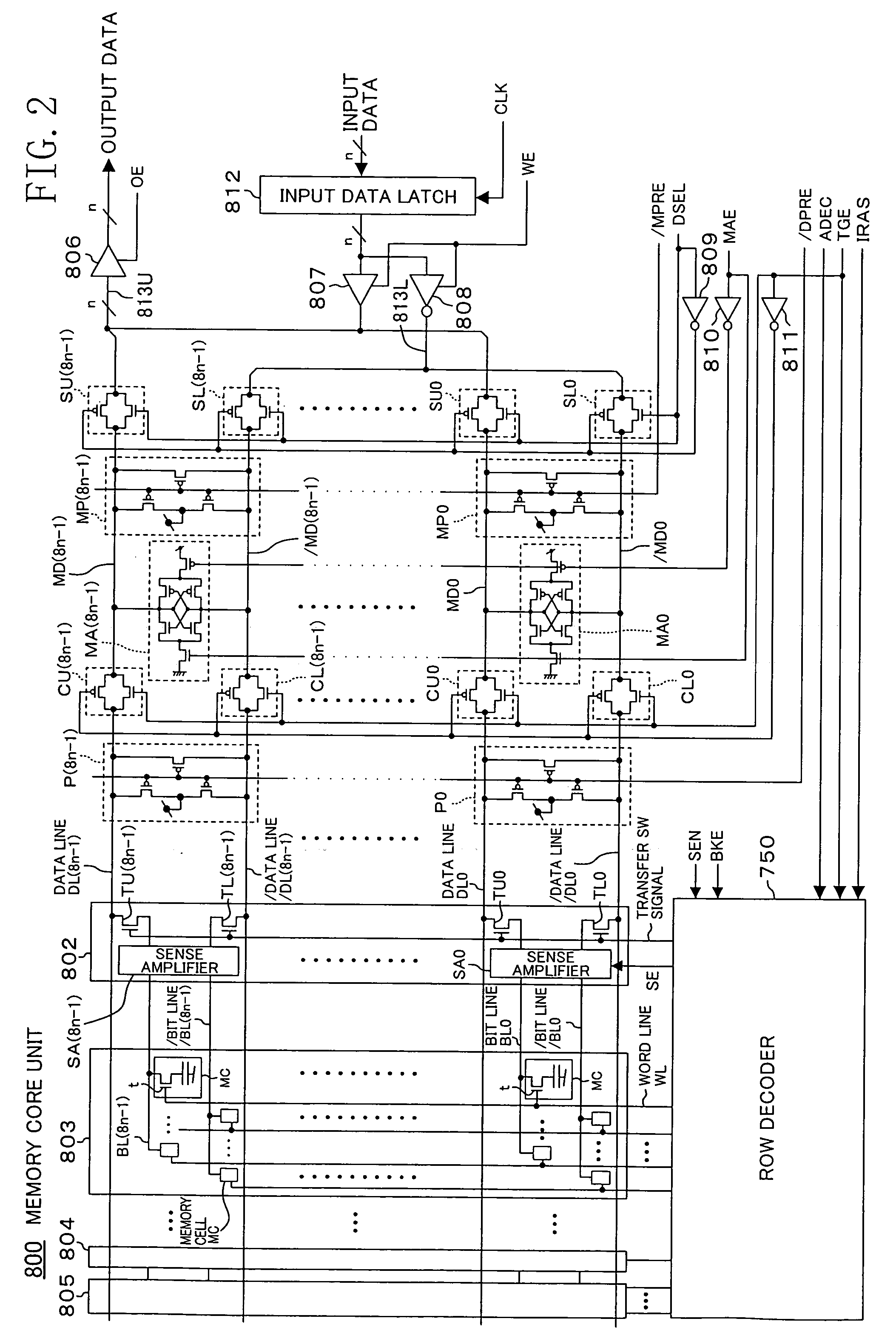Semiconductor device having read and write operations corresponding to read and write row control signals
a technology of read and write operation and control signal, which is applied in the field of semiconductor devices, can solve the problems of disadvantageous data storage and inability to perform a refresh operation for memory cells during this period, and achieve the effect of shortening the time necessary for this write operation and performing it in a short tim
- Summary
- Abstract
- Description
- Claims
- Application Information
AI Technical Summary
Benefits of technology
Problems solved by technology
Method used
Image
Examples
Embodiment Construction
[0053]A DRAM (semiconductor device) according to a preferred embodiment of the invention will now be described with reference to the accompanying drawings.
[0054]FIG. 1 shows the architecture of the DRAM 900. In FIG. 1, the DRAM 900 includes a row address generation unit 100, a row control signal generation unit 200, a first column control signal generation unit 300, a second column control signal generation unit 400, a column address latch 500, a column address decoder 600, a row address pre-decoder 700 and a memory core unit 800.
[0055]The row address generation unit 100 receives, as shown also in FIG. 4, an external row address ERADR, a clock CLK, an address latch clock ADLCK described below and supplied from the row control signal generation unit 200, an address switching signal ADSEL and a count clock CNTCK, and generates and outputs an internal row address IRADR. Also, the row control signal generation unit 200 receives, as shown also in FIG. 3, the clock CLK, a reading row cont...
PUM
 Login to View More
Login to View More Abstract
Description
Claims
Application Information
 Login to View More
Login to View More - R&D
- Intellectual Property
- Life Sciences
- Materials
- Tech Scout
- Unparalleled Data Quality
- Higher Quality Content
- 60% Fewer Hallucinations
Browse by: Latest US Patents, China's latest patents, Technical Efficacy Thesaurus, Application Domain, Technology Topic, Popular Technical Reports.
© 2025 PatSnap. All rights reserved.Legal|Privacy policy|Modern Slavery Act Transparency Statement|Sitemap|About US| Contact US: help@patsnap.com



